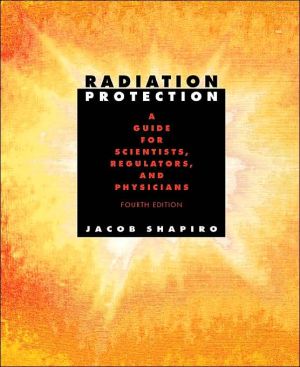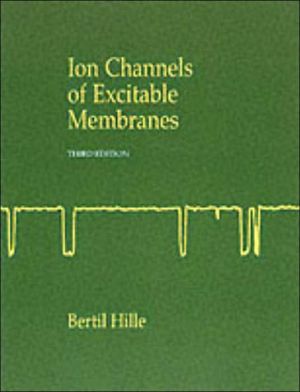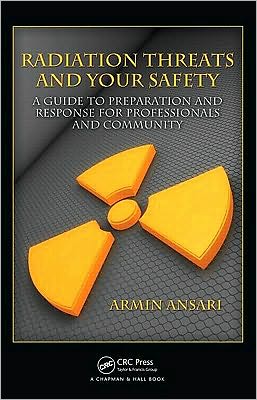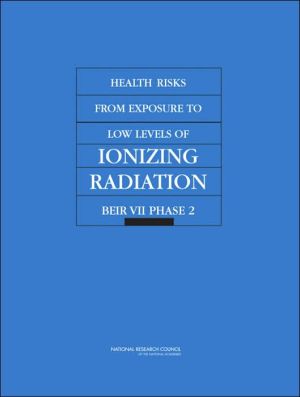Radiation Protection: A Guide for Scientists, Regulators, and Physicians, Fourth Edition
This highly successful manual has served for nearly three decades as the definitive guide to the safe use of radioactive materials. Completely revised and updated, the fourth edition presents a new dimension by adding coverage of nonionizing radiation, and is thus concerned with the entire field of radiation protection.\ The author takes the novel approach of introducing the whole range of energies possessed by particles and electromagnetic waves at the beginning of the text, thus integrating...
Search in google:
This highly successful manual has served for nearly three decades as the definitive guide to the safe use of radioactive materials. Completely revised and updated, the fourth edition presents a new dimension by adding coverage of nonionizing radiation, and is thus concerned with the entire field of radiation protection. The author takes the novel approach of introducing the whole range of energies possessed by particles and electromagnetic waves at the beginning of the text, thus integrating coverage of ionizing and nonionizing radiation rather than considering them as two separate disciplines. He goes on to cover the entire spectrum of radiation sources, including radionuclides, x-ray machines, accelerators, nuclear reactors, power lines, microwave towers, and cellular phones. With its expanded coverage, including a broader focus on public health issues, this new volume will serve as an important training and reference resource, not only for research scientists, physicians, and engineers, but for regulatory officials, attorneys, engineers, and environmental health and safety professionals. The breadth of citations alone makes this resource invaluable. American Journal of Roentgenology It is without doubt the finest publication of its kind. The manual addresses the principles and practices of radiation protection for those nonspecialists whose work in research or the field of medicine requires the use of radiation sources.
Historical Prologue1Pt. 1Energy - The Unifying Concept in Radiation Protection91Radiation's Dual Identity92Energy Relationships in the Hydrogen Atom113Energy Levels in Atoms with Higher Z134Energy Levels in Molecules145Energies of Motion Associated with Temperature146Bonding Energies157Energy from Mass - The Ultimate Energy Source168Some Interesting Energy Values17Pt. 2Principles of Protection against Ionizing Particles181The Approach182Energy and Injury193Charged and Uncharged Ionizing Particles204Energy Transfer by Charged Particles205The Stopping Power Equation226Beta Particles - A Major Class of Charged Ionizing Particles237Characteristics of Uncharged Ionizing Particles338Gamma Rays - A Major Class of Uncharged Ionizing Particles339Heavy Charged Ionizing Particles5110The Neutron - A Second Important Uncharged Ionizing Particle5411The Absorbed Dose - A Measure of Energy Imparted to a Medium6012The Equivalent Dose - A Common Scale for Doses to Organs and Tissues from Different Radiation Types and Energies6313Tissue Weighting Factors and the Effective Dose - A Measure of Risk and Severity of Consequences6714The Roentgen - The Traditional Unit for Expressing Radiation Exposure7115The Significance of External Radiation Levels7216Exposure from Internal Radiation Sources7717The Annual Limit on Intake - The Basic Quantity for the Control of Internal Exposures8018Limit for the Concentration of a Radionuclide in Air - A Derived Limit8119Levels of Radioactivity inside the Body - A Useful Benchmark for Internal Exposure8220Protection from Radioactive Contamination8421Some Simple Calculations in Radiation Protection8522X Rays - Radiation Made by Machine9423Dose Measurements in Diagnostic Radiology12424Exposure Guides and Reference Levels in Diagnostic Radiology12725Protection of the Patient in X-Ray Diagnosis12926Radiation Levels in the Working Areas around X-Ray Machines13527Dose Reduction in Nuclear Medicine14228Exposure of the Embryo, Fetus, or Nursing Child14229Protection of the Patient in Radiation Therapy14330Misadministrations in the Medical Use of Radiation and Radioactive Material14631Occupational Exposures Incurred in the Medical Use of Radiation14732Comments for Users of X-Ray Diffraction Machines15233Particle Accelerators - The Universal Radiation Source15534Regulation of Radiation Sources and Uses164Pt. 3Radiation Dose Calculations1671Dose from Beta-Emitting Radionuclides inside the Body1682A Closer Look at the Dose from Beta Particles1753Calculation of the Absorbed Dose from Gamma Emitters in the Body1784Summary of Formulas1895Dose Calculations for Specific Radionuclides1916Dose Rates from Small, Highly Radioactive Particles2247The Radioactive Patient as a Source of Exposure2298Radiation Doses in Nuclear Medicine2319Evaluation of Doses within the Body from X Rays23610Survey Results, Handbooks, and the Internet24511Producing an Optimum Radiation Field for Treating a Tumor246Pt. 4Radiation Measurements2501Radiation Counting with a Geiger-Muellet Counter2502Energy Measurements with a Scintillation Detector2633Detectors for Special Counting Problems2794Measuring Radiation Dose Rates2835Measuring Accumulated Doses over Extended Periods - Personnel and Environmental Monitoring2966Specifying Statistical Variations in Counting Results3027Comments on Making Accurate Measurements320Pt. 5Practical Aspects of the Use of Radionuclides3221Obtaining Authorization to Use Radionuclides3232Training Required for Working with Radionuclides3323Responsibilities of Radionuclide Users3364Standards for Protection against Radiation3375Personnel Monitoring for External Radiation Exposure3376Monitoring Personnel Subject to Intakes of Radioactive Material3397NRC and ICRP Values for Annual Limits on Intake and Airborne Radioactivity Concentration Limits3428Posting of Areas3499Laboratory Facilities35010Protective Clothing35311Trays and Handling Tools35412Special Handling Precautions for Radioiodine35413Hygiene35714Trial Runs35715Delivery of Radionuclides35716Storage and Control of Radionuclides35817Storage of Wastes35918Waste Disposal35919Use of Radioactive Materials in Animals37220Transportation of Radionuclides37321Contamination Control38022Personnel Contamination and Decontamination38323Leak Tests of Sealed Sources38324Notification of Authorities in the Event of Radiation Incidents38525Termination of Work with Radionuclides385App. AEmergency Instructions in the Event of Release of Radioactivity and Contamination of Personnel386App. BThe Regulatory Process388App. CControl of Airborne Releases to the Environment396Pt. 6Ionizing Radiation and Public Health4051Formulation of Standards for Radiation Protection4052Medical Findings on Humans Exposed on Radiation4173Risks to Health from Exposure to Alpha Radiation4424Implications for Humans from Results of Animal Experiments4515Sources Producing Population Exposure4536Population Exposure from Radiation Accidents4837Nuclear Weapons - Ready for Armageddon504Pt. 7Exposure to Nonionizing Electromagnetic Radiation5121Electromagnetic Fields - Quantities, Units, and Maxwell's Equations5132Interaction of Fields from Electric Power Lines with the Body5183The Physics of Radiating Electromagnetic Fields5204Absorption of Electromagnetic Radiation in the Body5245Specifying Dose to Tissue from Electromagnetic Fields5266Devices That Produce Electromagnetic Fields5287Making Measurements of ELF and Radiofrequency Electromagnetic Fields5358Standards for Protection against Electromagnetic Fields5369Medical Findings on Humans54410Effects on Animals - Basic Research55511Exposures from Environmental Fields55612Effects of Electromagnetic Interference on Pacemakers56013Exposures to Patients and Staff from Medical Devices56114Occupational Exposure to Electromagnetic Radiation56215Beyond Microwaves563Pt. 8Current Issues in Radiation Protection: Where the Experts Stand5661On Electromagnetic Fields5662On Defining and Regulating the Hazards of Exposure to Ionizing Radiation5683On Reducing Population Radiation Exposure from Medical and Dental X Rays5704On the Safety of Nuclear Power5735On the Hazards of Nuclear Weapons Tests and Underground Explosions5766On the Consequences to Civilization of an All-Out Thermonuclear War5787A Personal Statement580App. IProblems583App. IIData on Selected Radionuclides590App. IIISome Constants, Conversion Factors, and Anatomical and Physiological Data594Selected Bibliography597References601Index649
\ Health PhysicsJacob Shapiro's well-known and successful text has been completely revised and updated in this fourth edition, expanding on the principles and practices of radiation protection and using updated ICRP quantities and concepts...Coverage of the entire spectrum of radiation protection makes this volume an important training and reference manual for a wide range of disciplines using radiation in science, medicine, academia, industry, and government. A nice touch is the inclusion of web site addresses for government agencies and scientific committees.\ — Rose Marie Pratt\ \ \ \ \ \ NatureThe coverage is complete, the style simple, the order logical and the whole easy to read.\ \ \ \ American Association of Physics in MedicineThe book is very well written and organized into sections so that it may be used by students of various backgrounds and interests.\ \ \ \ \ \ American Journal of RoentgenologyIt is without doubt the finest publication of its kind. The manual addresses the principles and practices of radiation protection for those nonspecialists whose work in research or the field of medicine requires the use of radiation sources.\ \ \ \ \ \ Health PhysicsJacob Shapiro's well-known and successful text has been completely revised and updated in this fourth edition, expanding on the principles and practices of radiation protection and using updated ICRP quantities and concepts...Coverage of the entire spectrum of radiation protection makes this volume an important training and reference manual for a wide range of disciplines using radiation in science, medicine, academia, industry, and government. A nice touch is the inclusion of web site addresses for government agencies and scientific committees.\ — Rose Marie Pratt\ \ \ \ \ NatureThe coverage is complete, the style simple, the order logical and the whole easy to read.\ \ \ \ \ American Association of Physics in MedicineThe book is very well written and organized into sections so that it may be used by students of various backgrounds and interests.\ \ \ \ \ American Journal of RoentgenologyIt is without doubt the finest publication of its kind. The manual addresses the principles and practices of radiation protection for those nonspecialists whose work in research or the field of medicine requires the use of radiation sources.\ \







